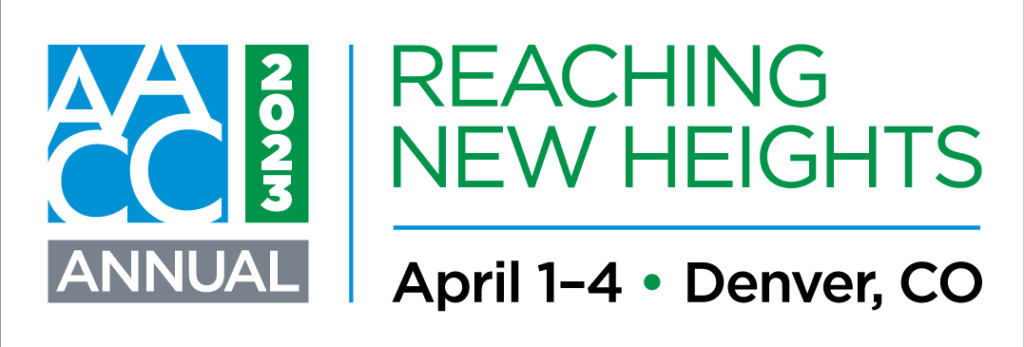DENVER — Northern Virginia Community College (NOVA) has offered dual-enrollment programming since 2004. But after analyzing its dual-enrollment data in recent years, NOVA leaders saw some big gaps and took action.

Leaders wanted to find out what the college and students were getting from its dual enrollment. There were benefits, of course. Dual enrollment brings in state funding for the college. It also can be a great promotional tool for NOVA programs. And students benefit by earning college credits at no cost.
But who, exactly, were these students? NOVA’s dual-enrollment program was serving a population that skewed white and female – which wasn’t the majority demographic served by the K-12 schools in NOVA’s service area. Students from the schools that offered free and reduced lunches were not enrolling in dual-enrollment courses at the same rate as students from schools in wealthier areas.
“We were off in who we were serving compared to our population,” Amy Nearman, NOVA’s director of dual enrollment, said during a session at 2023 AACC Annual.
At the same time, the conversion rate was declining. A lot of “high flyers” were taking classes and going straight into a four-year college.
“It’s not great when we don’t convert them to continue their path at NOVA,” Nearman said.
With that information, Nearman and others knew what they had to do: reach more underrepresented students, expand access and improve conversion rates. They had to improve how students build connections with the college.
Jumpstarting connections
In 2020, during the height of the pandemic, NOVA launched JumpStart. The summer program was open to 3,000 high school juniors and seniors who could take two tuition-free general education courses. Students were given six courses to choose from – courses that were not part of NOVA’s traditional dual- enrollment offerings. Sessions were six weeks long and online.
The program, which NOVA funded, had such high interest that the college decided to focus on primarily serving graduating seniors.
The first JumpStart session was a success. There was an 83% pass rate (the NOVA average pass rate is 73%) and a 37% matriculation rate into fall 2020. The program reached more Black and Hispanic students, too.
But it wasn’t without challenges. The college had difficulty staffing courses. And they learned that a six-week session was “a little too short and a little too much” for students, Nearman said.
NOVA continued JumpStart in summer 2021 with some changes. It was offered only to graduating seniors, sessions were lengthened to 10 weeks and students had more classes to choose from.
Despite these changes, GPA and matriculation rates dropped. High school students in 2021 were burned out, Nearman said.
But NOVA didn’t back away from the JumpStart. For summer 2022, the college revamped the program – now called JumpStart2NOVA – and targeted students thinking of coming to NOVA, including homeschool and private school students. Students received a lot of support, which is “key to online courses,” Nearman said.
Students had a mandatory orientation and access to open office hours with success coaches. They were limited to taking one course and a student success course. There also were lunch-and-learn sessions for parents.
“We wrapped them in support and connected them with the college,” Nearman said.
The refocused program found success. More Hispanic students took courses and the overall matriculation rate was 67%.
In 2020, NOVA also launched its Early Online College program, offered to high school juniors and seniors who can take two tuition-free courses. The program complements dual-enrollment offerings in the high schools.
To ensure the program was tuition-free, NOVA sought funding from cities and counties in its area. All but one jurisdiction agreed to provide the funding. Students have to pay for course materials, but NOVA is moving toward more courses with open educational resources, rather than traditional textbooks.
The program now serves students in five counties.
NOVA also is partnering with George Mason University (GMU) as part of a new “lab school” initiative in Virginia, said Eun-Woo Chang, NOVA’s vice president of academic affairs and chief academic officer. NOVA and GMU will work with Fairfax County Schools on an Accelerated College Pathways Academy focused on IT. Students will graduate with an associate degree from NOVA along with their high school diploma and transfer seamlessly to GMU.
Connections in high school
To reach these high school – and potential NOVA – students, Nearman makes sure she’s in the high schools, meeting with K-12 leadership and working with high school counselors.
“Being present in schools in really important,” Nearman said.
NOVA’s dual-enrollment office has four coordinators in 79 schools. These coordinators can sit with students to help them apply for dual enrollment and register for classes, as well as helping them “connect the dots” and see just how early college credit can benefit them.
The college continues to analyze data to improve programming and outreach, and continues to seek non-traditional funding for dual enrollment programs.
NOVA is the first community college in Virginia to receive accreditation from the National Alliance of Concurrent Enrollment Partnerships.

